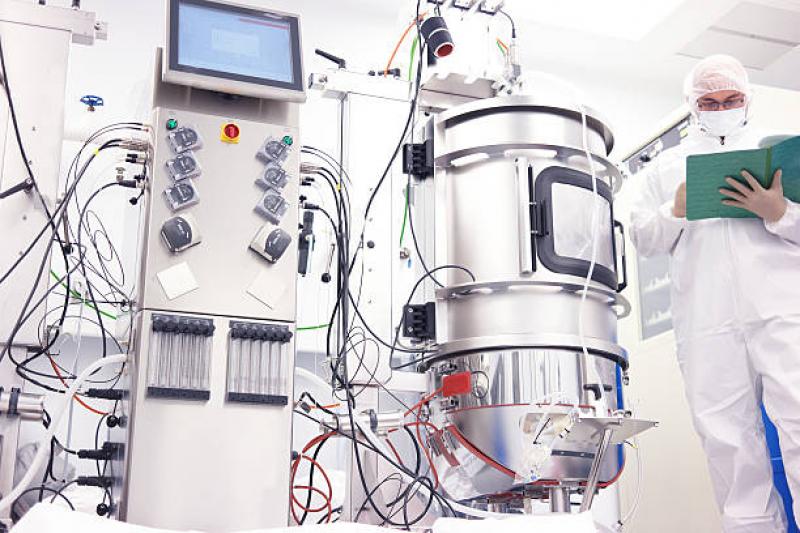Single-Use Bioreactor: Advancements in Bioprocessing and Biopharmaceutical Manufacturing
Single-use bioreactors have emerged as a game-changing technology in the field of bioprocessing and biopharmaceutical manufacturing. These innovative systems offer numerous advantages over traditional stainless steel bioreactors, including increased flexibility, reduced contamination risks, cost-efficiency, and enhanced scalability. In this comprehensive article, we explore the science behind single-use bioreactors, their applications in biopharmaceutical production, and their impact on the industry's efficiency and sustainability.
What is a Single-Use Bioreactor?
A single-use bioreactor, also known as a disposable bioreactor or SUB, is a closed-system vessel used to cultivate cells in bioprocessing and biopharmaceutical manufacturing. Unlike traditional stainless steel bioreactors, single-use bioreactors are made from flexible, disposable materials such as plastic bags or biocompatible films. These vessels are designed for single-use applications, eliminating the need for cleaning and sterilization between batches and reducing the risk of cross-contamination.
Principles of Single-Use Bioreactors
Single-use bioreactors operate on the same principles as traditional bioreactors, providing an environment for cell culture growth and expression of biologically active compounds. The vessel's design incorporates sparging systems for aeration, temperature control systems, and agitation mechanisms to ensure optimal conditions for cell growth and product synthesis. The closed-system design of single-use bioreactors minimizes exposure to the external environment, reducing the risk of contamination and ensuring aseptic conditions.
Applications in Biopharmaceutical Production
Single-use bioreactors find extensive applications in the production of biopharmaceuticals, including therapeutic proteins, monoclonal antibodies, vaccines, and viral vectors. Some of the key applications include:
-
Upstream Processing: Single-use bioreactors play a crucial role in upstream processing, where they facilitate cell culture expansion and product expression. The flexible design allows for easy scalability, enabling manufacturers to adapt to varying production volumes and process requirements.
-
Viral Vector Production: Single-use bioreactors are increasingly used in viral vector production for gene and cell therapies. Their closed-system design minimizes the risk of viral contamination and ensures the integrity of the viral vector products.
-
Continuous Bioprocessing: Single-use bioreactors have enabled advancements in continuous bioprocessing, a continuous flow approach to biopharmaceutical manufacturing. Continuous bioprocessing offers significant advantages in terms of productivity, process control, and resource utilization.
-
Biosimilar and Biobetter Production: Single-use bioreactors are instrumental in the production of biosimilars and biobetters, offering manufacturers flexibility and cost-efficiency in bringing these important therapies to market.
Advantages of Single-Use Bioreactors
-
Reduced Cross-Contamination Risk: The disposable nature of single-use bioreactors eliminates the need for cleaning and sterilization between batches, significantly reducing the risk of cross-contamination.
-
Flexibility and Scalability: Single-use bioreactors offer high flexibility, allowing manufacturers to adapt quickly to changing production demands and scale-up or scale-down operations as needed.
-
Cost-Efficiency: Single-use bioreactors eliminate the need for capital investments in stainless steel vessels and associated cleaning and sterilization equipment. This reduces overall infrastructure costs and operational expenses.
-
Faster Turnaround Time: Without the need for cleaning and sterilization cycles, single-use bioreactors offer faster turnaround times between batches, increasing production efficiency.
-
Sustainability: Single-use bioreactors contribute to sustainability efforts by reducing water consumption and energy usage associated with cleaning and sterilization processes.
Challenges and Quality Considerations
While single-use bioreactors offer numerous advantages, they also present some challenges and quality considerations. The choice of materials and design must ensure the compatibility of the bioreactor with the specific cell culture system and the stability of the products being produced. Quality control measures, including sterility testing and validation, are crucial to ensure the integrity and safety of the bioprocess.
Conclusion
Single-use bioreactors have revolutionized bioprocessing and biopharmaceutical manufacturing, offering enhanced flexibility, cost-efficiency, and sustainability. As the biopharmaceutical industry continues to grow and evolve, single-use bioreactors will play an increasingly vital role in enabling rapid, scalable, and reliable production of life-saving therapies. With ongoing advancements in materials, design, and quality control, the future of single-use bioreactors holds tremendous promise, driving innovations in bioprocessing and ultimately benefiting patients worldwide.
